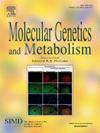利用真实世界的数据研究艾卡迪-古蒂耶尔综合征的全身并发症
IF 3.7
2区 生物学
Q2 ENDOCRINOLOGY & METABOLISM
引用次数: 0
摘要
目标阿卡迪-古蒂耶尔综合征(AGS)是一种罕见的遗传性干扰素病,伴有多种多系统并发症。我们对该病的纵向、系统性疾病负担的了解存在严重不足,而诊断延迟又使这一问题变得更加复杂。为了满足这一需求,我们使用从现有医疗记录中提取的真实世界数据来描述纵向疾病负担的特征。方法纳入所有参加髓鞘疾病生物储存库项目(MDBP)、经基因证实患有 AGS 的受试者(n = 167)。根据医疗记录,收集了受试者的人口统计学特征、发病年龄和疾病并发症等信息。此外,还收集了已发表的 AGS 病例(2007-2022 年;n = 129)的个人数据信息。结果自然病史队列中的基因型频率为 TREX1(n = 26,15.6%)、RNASEH2B(n = 50,29.9%)、RNASEH2C(n = 3,1.8%)、RNASEH2A(n = 7,4.2%)、SAMHD1(n = 25,15.0%)、ADAR(n = 34,20.4%)、IFIH1(n = 19,11.4%)和 RNU7-1(n = 3,1.8%)。全身发病的中位年龄为 0.15 岁 [IQR = 0.67 岁;不同基因型的中位范围:0(TREX1)- 0.62(ADAR)岁],而神经系统发病的中位年龄为 0.33 岁 [IQR = 0.最常见的早期全身并发症是胃肠道并发症,包括吞咽困难或进食不耐受(124 例)和肝功能异常(67 例)。在产后并发症中,血小板减少最早出现(29 例,中位数为 0.06 年)。音调异常(轴性肌张力低下:145 人,占 86.8%;肌张力障碍:123 人,占 73.7%)、易激惹(115 人,占 68.9%)和大运动迟缓(112 人,占 7.1%)是最常见的神经系统症状。此前发表的病例报告也显示了类似的模式。整个队列的 AGS 评分中位数为 4(IQR = 7)。最严重的神经系统表型出现在与 TREX1 相关的 AGS 中(n = 19,中位 AGS 严重度评分为 2,IQR = 2)。安置喂食管的时间、皲裂、早期粗大运动迟缓、早期认知迟缓和运动退行与基因型显著相关(Fleming-Harrington log-rank:分别为 p = 0.0002、p < 0.0001、p = 0.0038、p < 0.0001、p = 0.0001)。在合格的病例报告(n = 129)中,张力异常是最常见的疾病特征,96 例病例中有 37 例(38.结论AGS是一种多器官系统功能障碍的异质性疾病,在整个临床过程中会不断加重,从而对神经系统和神经系统外的疾病产生深远的影响。大多数病例的全身症状先于神经系统疾病特征。一岁前发病、小头畸形、安置喂食管和癫痫发作与较差的神经系统预后有关。这项工作将为循证临床监测指南和临床试验设计提供依据。本文章由计算机程序翻译,如有差异,请以英文原文为准。
Systemic complications of Aicardi Goutières syndrome using real-world data
Objective
Aicardi Goutières Syndrome (AGS) is a rare genetic interferonopathy associated with diverse multisystemic complications. A critical gap exists in our understanding of its longitudinal, systemic disease burden, complicated by delayed diagnosis. To address this need, real-world data extracted from existing medical records were used to characterize the longitudinal disease burden.
Methods
All subjects (n = 167) with genetically confirmed AGS enrolled in the Myelin Disorders Biorepository Project (MDBP) were included. As available in medical records, information was collected on subject demographics, age of onset, and disease complications. Information from published cases of AGS (2007–2022; n = 129) with individual-level data was also collected. Neurologic severity at the last available encounter was determined by retrospectively assigning the AGS Severity Scale [severe (0–3), moderate (4–8), and mild (9–11)].
Results
The genotype frequency in the natural history cohort was TREX1 (n = 26, 15.6 %), RNASEH2B (n = 50, 29.9 %), RNASEH2C (n = 3, 1.8 %), RNASEH2A (n = 7, 4.2 %), SAMHD1 (n = 25, 15.0 %), ADAR (n = 34, 20.4 %), IFIH1 (n = 19, 11.4 %), and RNU7–1 (n = 3, 1.8 %). The median age of systemic onset was 0.15 years [IQR = 0.67 years; median range by genotype: 0 (TREX1) - 0.62 (ADAR) years], while the median neurological onset was 0.33 years [IQR = 0.82 years; median range by genotype: 0.08 (TREX1) - 0.90 (ADAR) year].
The most common early systemic complications were gastrointestinal, including dysphagia or feeding intolerance (n = 124) and liver abnormalities (n = 67). Among postnatal complications, thrombocytopenia appeared earliest (n = 29, median 0.06 years). Tone abnormalities (axial hypotonia: n = 145, 86.8 %; dystonia: n = 123, 73.7 %), irritability (n = 115, 68.9 %), and gross motor delay (n = 112, 7.1 %) emerged as the most prevalent neurological symptoms. Previously published case reports demonstrated similar patterns.
The median AGS score for the entire cohort was 4 (IQR = 7). The most severe neurologic phenotype occurred in TREX1-related AGS (n = 19, median AGS severity score 2, IQR = 2). Time to feeding tube placement, chilblains, early gross motor delay, early cognitive delay, and motor regression were significantly associated with genotype (Fleming-Harrington log-rank: p = 0.0002, p < 0.0001, p = 0.0038, p < 0.0001, p = 0.0001, respectively). Microcephaly, feeding tube placement, and seizures were associated with lower AGS scores (All: Wilcoxon rank sum test, p < 0.0001).
Among the qualifying case reports (n = 129), tone abnormalities were the most prevalent disease feature, with spastic quadriplegia reported in 37 of 96 cases (38.5 %) and dystonia in 30 of 96 cases (31.2 %).
Conclusions
AGS is a heterogeneous disease with multi-organ system dysfunction that compounds throughout the clinical course, resulting in profound neurological and extra-neurological disease impact. Systemic symptoms precede neurologic disease features in most cases. Disease onset before the age of one year, microcephaly, feeding tube placement, and seizures were associated with worse neurological outcomes. This work will inform evidence-based clinical monitoring guidelines and clinical trial design.
求助全文
通过发布文献求助,成功后即可免费获取论文全文。
去求助
来源期刊

Molecular genetics and metabolism
生物-生化与分子生物学
CiteScore
5.90
自引率
7.90%
发文量
621
审稿时长
34 days
期刊介绍:
Molecular Genetics and Metabolism contributes to the understanding of the metabolic and molecular basis of disease. This peer reviewed journal publishes articles describing investigations that use the tools of biochemical genetics and molecular genetics for studies of normal and disease states in humans and animal models.
 求助内容:
求助内容: 应助结果提醒方式:
应助结果提醒方式:


